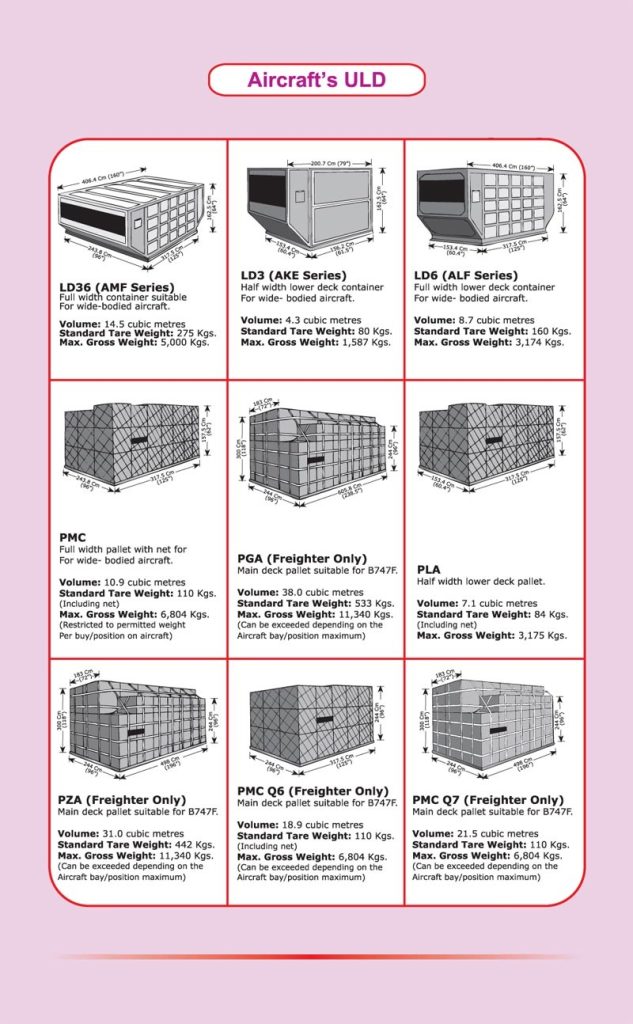Aircraft ULDs include pallets (with appropriate net) and containers which are designed to assist loading/unloading process of cargo and baggage by means of creating a unit of load that is easily handled by designed equipment.
ULDs can be restraint in aircraft hold by equipment which are part of aircraft. ULD can be considered as removable aircraft hold. Normally in narrow body aircrafts, loading are done manually and piece by piece but in wide body aircrafts, ULD are being used.
Ownership of ULD is not limited to airlines nor to IATA member airlines. All ULDs intend to use must meet the dimensional and weight standards set by IATA or other relate authorities. There are several types of unit load devices designed for lower deck and for higher deck of the aircraft which allows loading and unloading of cargo and passenger baggage.
Each ULD has IATA identification code, serial number and owner code. IATA identification code describes different information and consist of five alphabetic characters.
First Character shows ULD category
Second Character shows base dimension
Third Character shows contour or shape of the ULD
They are followed by a serial number and after that comes two letter code showing the owner of the ULD.
For example, a ULD with a code of “AKE”, the first word “A” shows that the ULD is “Certified Aircraft Container”, “K” is the base dimension of 156 x 154 CM and “E” shows that it is non-fork-liftable with 160 CM height with a curved side.

ULD Types
A Certified Aircraft Container
D Non-Certified Aircraft Container
P Certified Aircraft Pallet
R Thermal Certified Aircraft Container
U Non-Structural Igloo
M Thermal Non-Certified Aircraft Container
H Horse stall
V Automobile Transport Equipment
J Thermal Non-Structural Igloo
ULD Dimensions in CM
K 156 X 154
L 318 X 154
M 318 X 243
G 606 X 243
A 318 X 223
Q 243 X 154
P 18.5 X 154